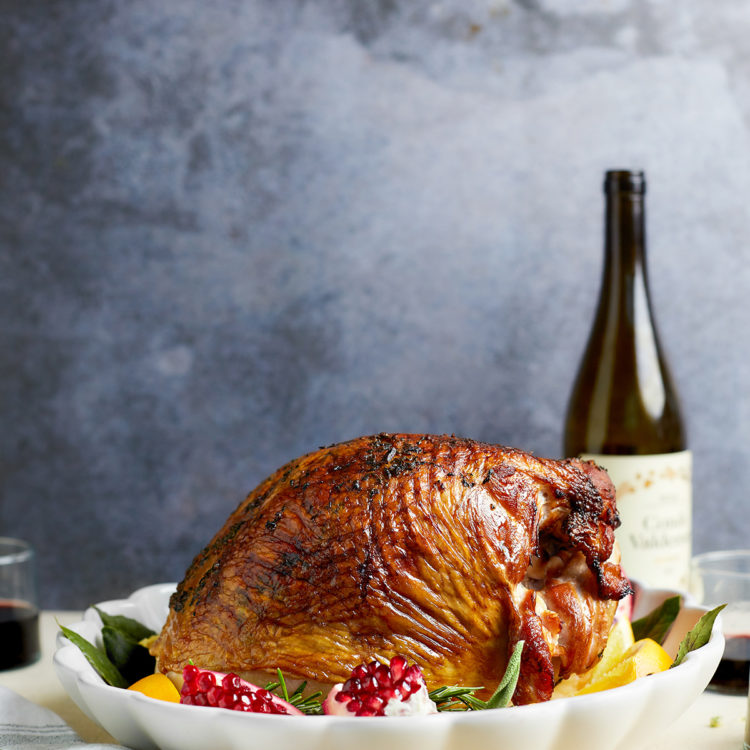
How to Roast a Stuffed Turkey
Planning to make an old-fashioned stuffed turkey for Thanksgiving? The end results will be delicious so long as you take the proper precautions to cook the stuffing properly! In this guide, I’m sharing How to Roast a Stuffed Turkey so your bird turns out moist and juicy and the stuffing gets fully cooked through.
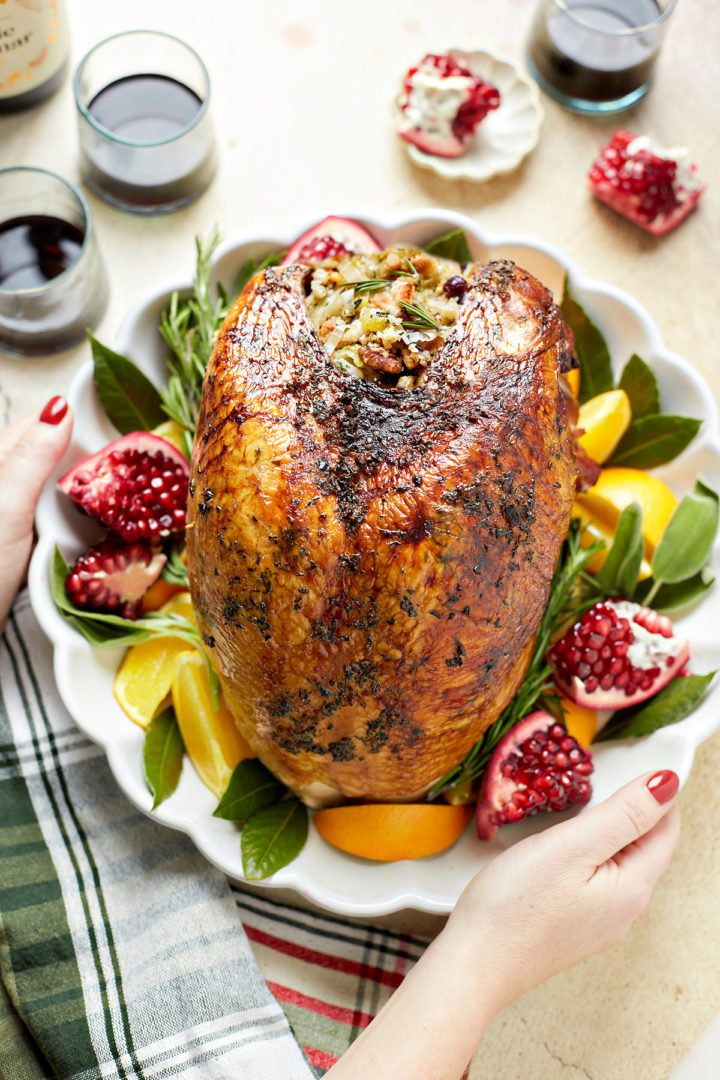
Why Take Extra Precautions When Stuffing a Turkey?
True Thanksgiving stuffing that’s actually stuffed inside the turkey before roasting is incredibly moist and flavorful.
Think about it: those turkey drippings that collect in the bottom of the roasting dish first have to pass through the stuffing inside the cavity, infusing it with unparalleled roast turkey flavor you can’t achieve otherwise!
Roasting a stuffed turkey also saves oven space since it’s really a two-for-one dish.
BUT — there’s a big “but” to keep in mind! — it’s very easy to roast the turkey to the appropriate internal temperature, while accidentally undercooking the stuffing inside the cavity. If you fail to cook the stuffing to the proper temperature, it will enter the “Danger Zone” and bacteria will grow on it, giving your Thanksgiving guests a bad case of food poisoning.
In this post, I’ll be sharing the exact steps you need to take to roast a stuffed turkey safely. I’ll go over the general cook times to keep in mind, as well as the internal temperatures you must adhere to.
What You’ll Need
I’ve linked my favorite Thanksgiving turkey and stuffing recipes below, as well as the necessary tools you’ll need to cook everything appropriately.
- Whole Turkey — Here are my top tips for roasting a turkey (unstuffed).
- Stuffing — I suggest using my bacon and leek stuffing or another egg-free stuffing.
- Probe Thermometer — Some kind of kitchen thermometer is essential so you can check the temperature of both the stuffing and the turkey.
- Roasting Pan with V Rack — My preferred pan for roasting a whole turkey, stuffed or not.
- 9×13-Inch Baking Dish — You’ll need to bake the stuffing separately to ensure it’s cooked through. Safety first!
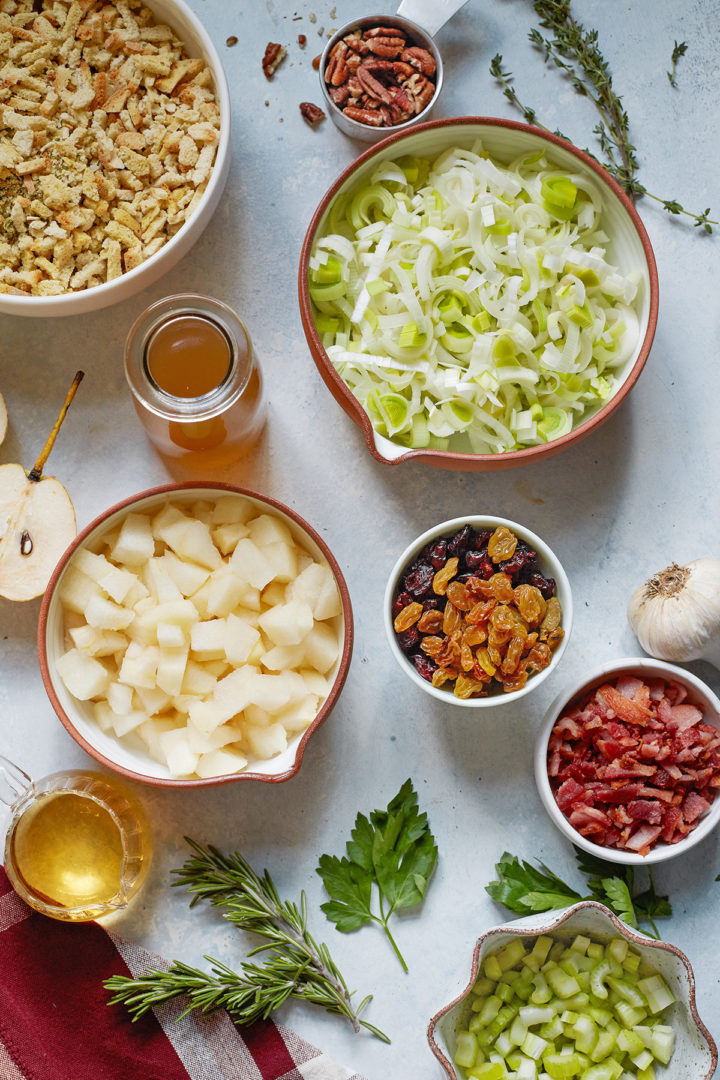
How to Roast a Stuffed Turkey
You have two options for cooking a stuffed roasted turkey:
- Cook the stuffing separately and then place inside the (cooked) turkey cavity.
- Fill the uncooked turkey with stuffing and roast them together.
Option 1 is the safest and is what I personally prefer. However, I’ll walk you through both methods below and will explain the pros and cons to each.
Option 1: Cook the Stuffing and Turkey Separately, Then Assemble (Safest Method!)
Cooking the turkey and stuffing separately ensures that both are cooked to the appropriate temperature so no one walks away with food poisoning.
The main drawback of this method is that the stuffing doesn’t have much time to soak up lots of the turkey drippings as the bird roasts, so it will be less flavorful.
- Prepare and cook the stuffing separately while the turkey roasts. You can use any stuffing recipe you like using this method!
- Place the stuffing into the turkey once it is done roasting. You can do this as the turkey is resting prior to being carved so that some of the juices still drip down into the stuffing to infuse it with flavor.
Option 2: Fill the Turkey with Stuffing, Then Roast Together
This is the traditional method for cooking stuffing, but you need to be vigilant about checking the temperature of both the turkey and the stuffing. BOTH must reach an internal temperature of 165ºF (use a probe thermometer to check this!) — otherwise you can’t serve the stuffing.
A stuffed turkey also takes longer to roast since the stuffing prevents any internal airflow within the cavity; the meat can often reach higher temperatures and then dry out while waiting for the stuffing to reach the appropriate temperature.
To reduce the risk of foodborne illness, I strongly suggest baking the stuffing separately as the turkey rests after being roasted.
- Place the stuffing inside the cavity of the raw turkey. The air needs to circulate, so DO NOT pack it tightly.
- If you wish to stuff the neck cavity as well, secure the excess skin over the opening so that the stuffing doesn’t fall out (you can do this using a kitchen skewer).
- Immediately roast the turkey as the recipe instructs. You CANNOT stuff a turkey in advance; it must be cooked immediately for food safety reasons.
- Take the temperature of both the turkey and stuffing using a probe thermometer. The breast meat and stuffing must both reach 165ºF before serving.
- To be safe, remove the stuffing from the turkey while the turkey rests. Transfer the stuffing to a casserole dish and bake, uncovered, at 350ºF until it reaches 165ºF.
Tip: If cooking a stuffed turkey, you can also reduce the risk of foodborne illness by using a stuffing recipe that’s egg-free. My Bacon Leek Stuffing meets this criteria!
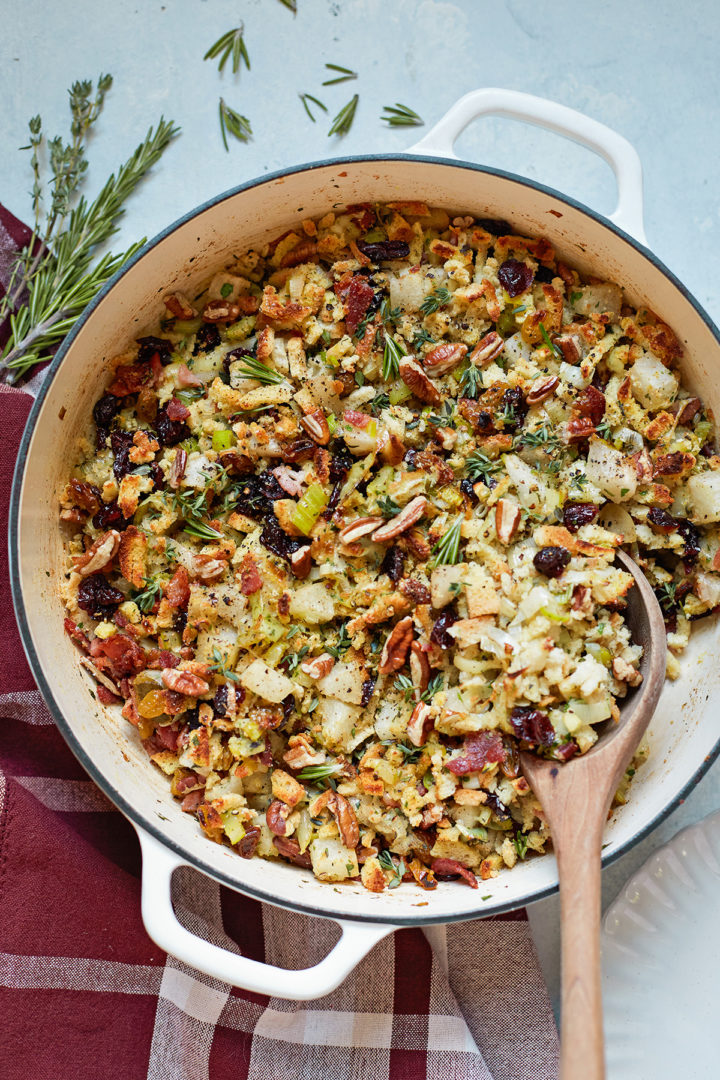
Tips for Stuffing a Turkey for Roasting
- Use an egg-free stuffing recipe, if possible. You’ll already have to be careful about cooking the stuffing long enough to kill any bacteria from inside the turkey cavity; play it safe and avoid adding raw egg to the stuffing. If your recipe calls for eggs, swap them out for pasteurized eggs.
- Do not overstuff the cavity. If the stuffing is packed in tightly, it won’t cook at an even rate. AKA you’ll wind up with perfectly cooked, safe to eat portions of stuffing as well as undercooked, bacteria-laden portions.
- Cook the stuffing separately. You can do this from the start and then place the stuffing inside the cooked turkey, or you can do this after the stuffing has cooked inside the turkey. It’s an added safety precaution that I highly recommend taking!
- Use a thermometer to check the internal temperatures. You should be testing both the turkey breast and the stuffing. The magic number you’re looking for is 165ºF.
- Never stuff a turkey in advance! As soon as the turkey is stuffed, it needs to go straight into the oven. You don’t want to give the stuffing any more time to soak up the raw turkey juices.
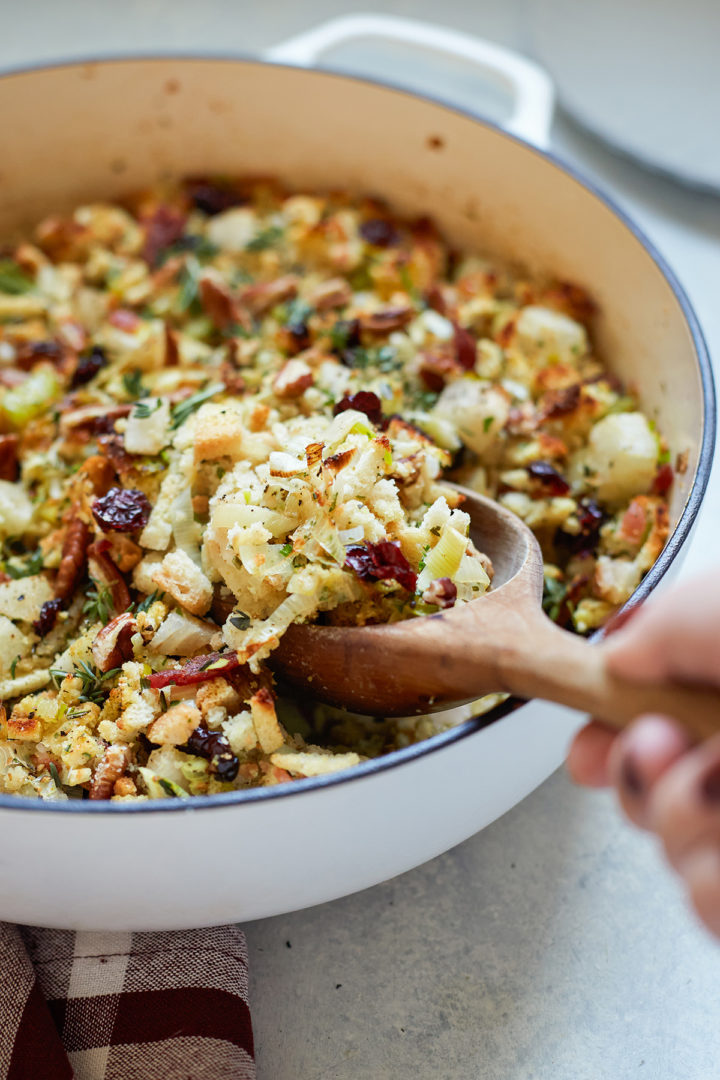
Turkey Roasting FAQs
Got questions about how to make this recipe? Here are the answers to a few commonly asked questions. Feel free to leave any other questions in the comments on this post and I’ll respond with answers.
Is it safe to stuff a turkey before roasting it?
Yes, but only if you’re careful to cook both the bird and the stuffing to a temperature of 165ºF. I always bake my stuffing in a separate baking dish as well to ensure there’s no lingering bacteria in the dish.
When should you put stuffing inside a turkey?
Just before it goes into the oven. If you’re trying to prepare elements of your Thanksgiving dinner in advance, you can assemble the raw stuffing as instructed, store it in an airtight container, and then place it inside the turkey just before roasting.
You should not stuff the raw turkey, refrigerate it, and then roast it the next day.
How long should you cook a stuffed turkey?
It depends on the size of the turkey, but generally speaking a stuffed turkey takes longer to roast than an unstuffed turkey.
A good rule of thumb is to plan on roasting a stuffed turkey for 15 to 17 minutes per pound. Pull it out of the oven once the breast registers 165ºF and the thigh registers 170ºF.
Then, transfer the stuffing to a baking dish and cook separately at 350ºF until it reaches 165ºF.
What temperature should the stuffing inside a turkey be cooked to?
Stuffing inside a turkey cavity must reach 165ºF before it’s safe to eat.
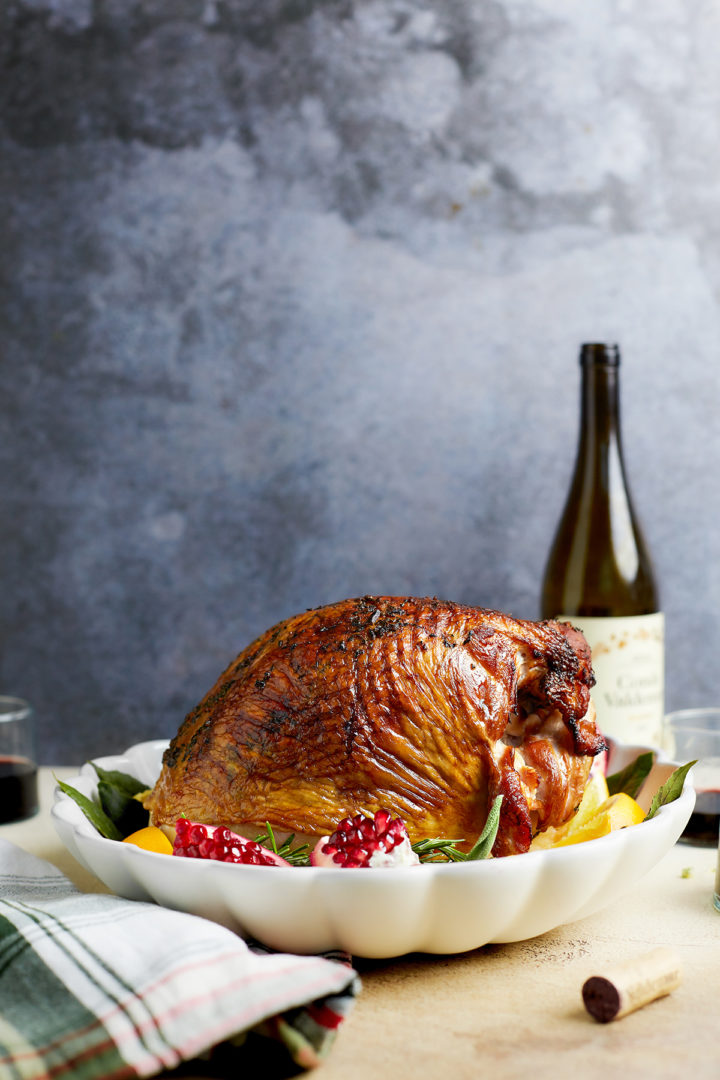
Try Stuffing Your Thanksgiving Turkey This Year!
If you want to make a stuffed roasted turkey this year, be sure to follow these guidelines!
Did you love how easy to follow these instructions were? Leave a comment below and give it a review for others to see what you thought.
On Instagram? Share your photo and tag me with @goodlifeeats and #goodlifeeatsrecipes. I’d love to see a photo of your stuffed turkey!
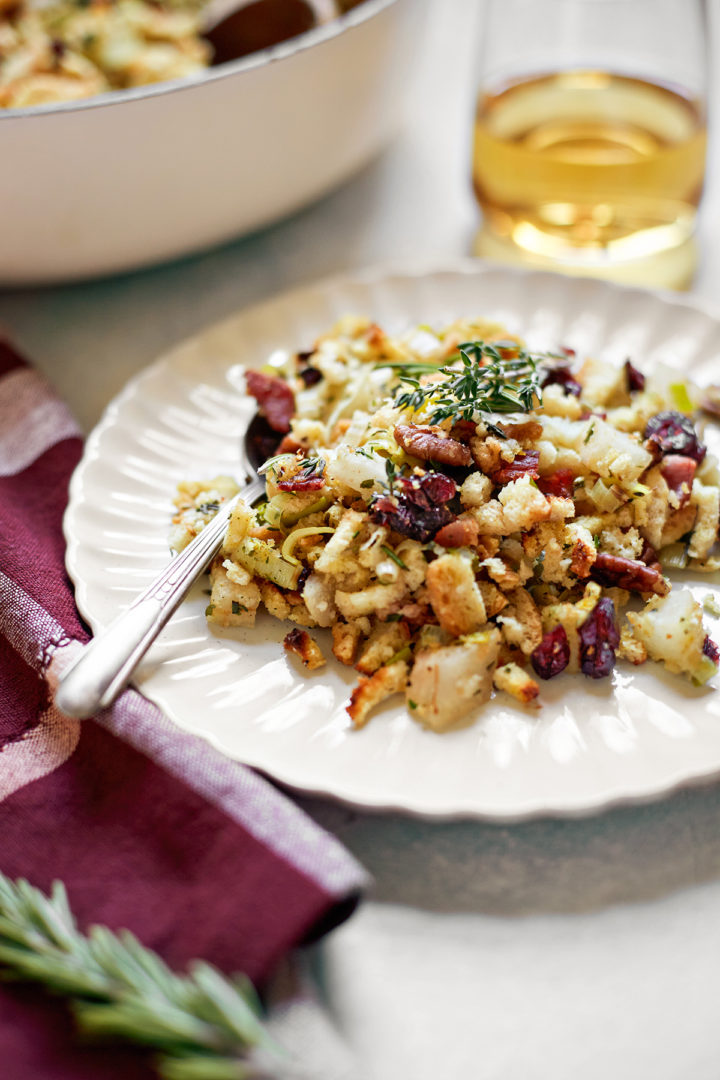
More Turkey Tutorials:
This Fresh Herb and Citrus Turkey Brine combines lots of fresh herbs with a subtle hint of citrus. Brining your Thanksgiving turkey in this citrus brine will tenderize the meat and infuse it with a TON of flavor for Turkey Day!
Making Turkey Gravy from Drippings isn’t hard, but making gravy with no lumps can be! Learn how to make turkey gravy from pan drippings in 5 simple steps, plus my top tips for fixing lumpy gravy.
Don’t waste any of your leftover holiday turkey this year! In this guide, I’ll share How to Freeze Turkey that’s been cooked already, as well as how to freeze the turkey carcass for making stock. Enjoy the taste of the holidays for months to come!
Making homemade Turkey Stock is relatively simple after your Thanksgiving Feast. Homemade turkey stock is so worth the effort!
You made it through Thanksgiving, but now you have a ton of leftover Turkey to deal with. Wondering what to do with leftover turkey? This post has you covered!
Stay Inspired in the Kitchen!
Want more delicious recipes, kitchen tips, and meal inspiration? Sign up for the Good Life Eats Newsletter and get:
✔ Tried-and-true recipes—from quick weeknight meals to special occasion favorites.
✔ Seasonal meal ideas—helping you make the most of fresh, in-season ingredients.
✔ Time-saving kitchen tips—boosting your confidence and creativity in the kitchen.
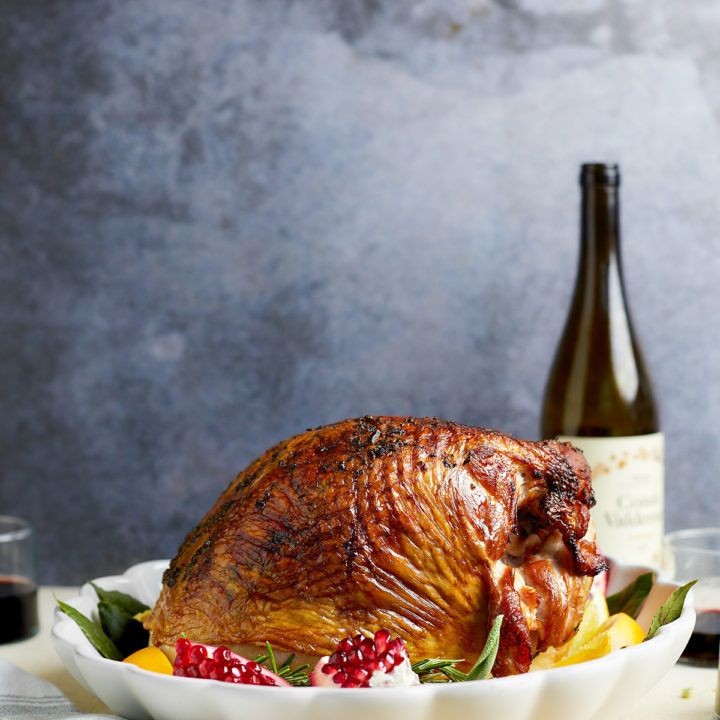
How to Roast a Stuffed Turkey
Planning to make an old-fashioned stuffed turkey this year for Thanksgiving? The end results will be delicious so long as you take the proper precautions to cook the stuffing properly! In this guide, I’m sharing How to Roast a Stuffed Turkey so your bird turns out moist and juicy and the stuffing gets fully cooked through.
Ingredients
- Whole Turkey
- Stuffing (preferably an egg-free recipe)
- Probe Thermometer
- Roasting Pan with V Rack
- 9x13-Inch Baking Dish
Instructions
Option 1: Cook the Stuffing and Turkey Separately, Then Assemble (Safest Method!)
- Prepare and cook the stuffing separately while the turkey roasts. You can use any stuffing recipe you like using this method!
- Place the stuffing into the turkey once it is done roasting. You can do this as the turkey is resting prior to being carved so that some of the juices still drip down into the stuffing to infuse it with flavor.
Option 2: Fill the Turkey with Stuffing, Then Roast Together
- Place the stuffing inside the cavity of the raw turkey. The air needs to circulate, so DO NOT pack it tightly.
- If you wish to stuff the neck cavity as well, secure the excess skin over the opening so that the stuffing doesn’t fall out (you can do this using a kitchen skewer).
- Immediately roast the turkey as the recipe instructs. You CANNOT stuff a turkey in advance; it must be cooked immediately for food safety reasons.
- Take the temperature of both the turkey and stuffing using a probe thermometer. The breast meat and stuffing must both reach 165ºF before serving.
- To be safe, remove the stuffing from the turkey while the turkey rests. Transfer the stuffing to a casserole dish and bake, uncovered, at 350ºF until it reaches 165ºF.
Notes
Use an egg-free stuffing recipe, if possible. You’ll already have to be careful about cooking the stuffing long enough to kill any bacteria from inside the turkey cavity; play it safe and avoid adding raw egg to the stuffing. If your recipe calls for eggs, swap them out for pasteurized eggs.
Do not overstuff the cavity. If the stuffing is packed in tightly, it won’t cook at an even rate. AKA you’ll wind up with perfectly cooked, safe to eat portions of stuffing as well as undercooked, bacteria-laden portions.
Cook the stuffing separately. You can do this from the start and then place the stuffing inside the cooked turkey, or you can do this after the stuffing has cooked inside the turkey. It’s an added safety precaution that I highly recommend taking!
Use a thermometer to check the internal temperatures. You should be testing both the turkey breast and the stuffing. The magic number you’re looking for is 165ºf.
Never stuff a turkey in advance! As soon as the turkey is stuffed, it needs to go straight into the oven. You don’t want to give the stuffing any more time to soak up the raw turkey juices.
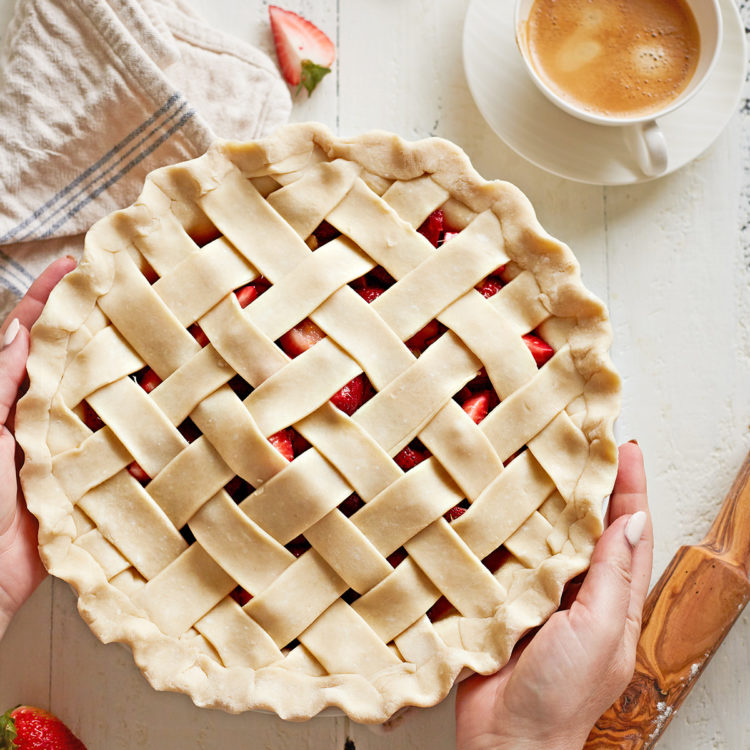
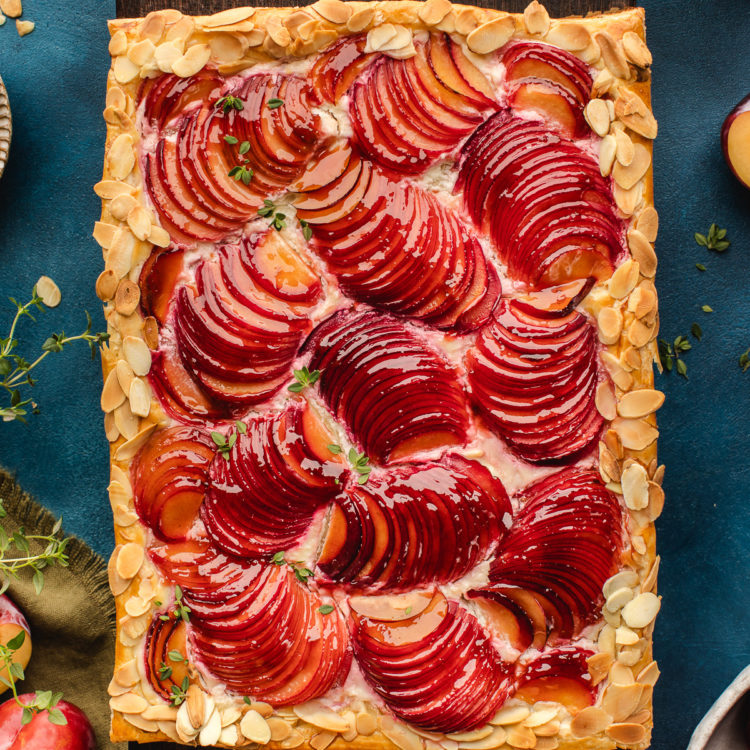
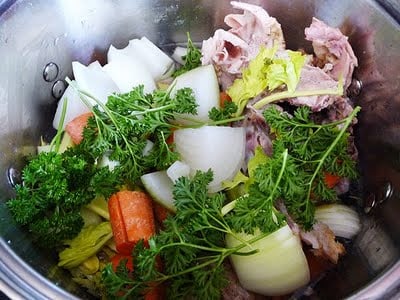
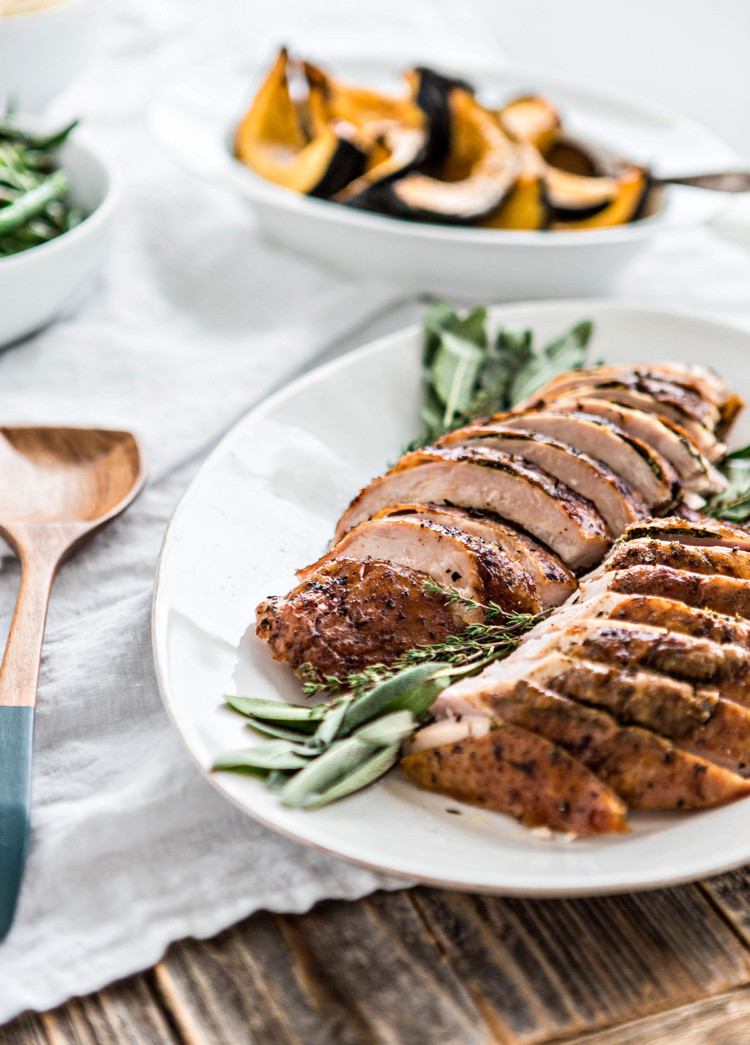
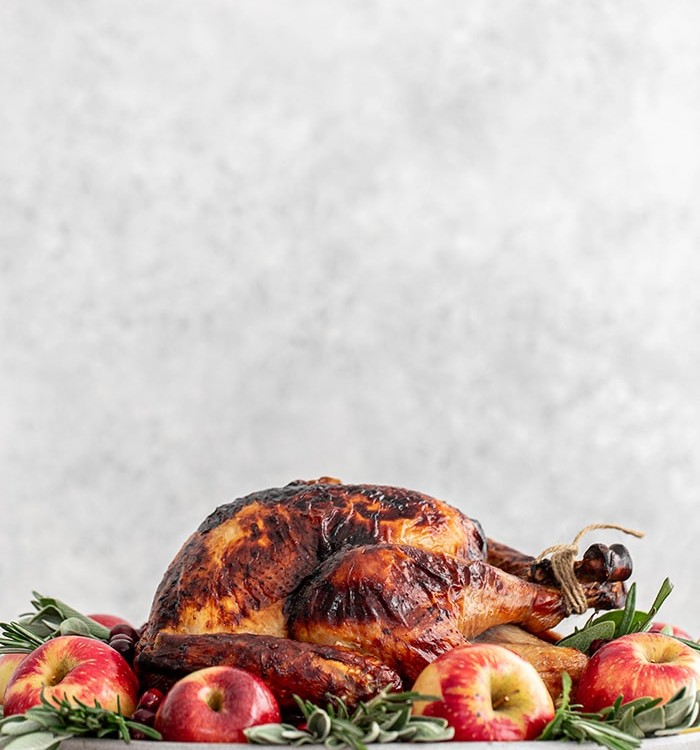
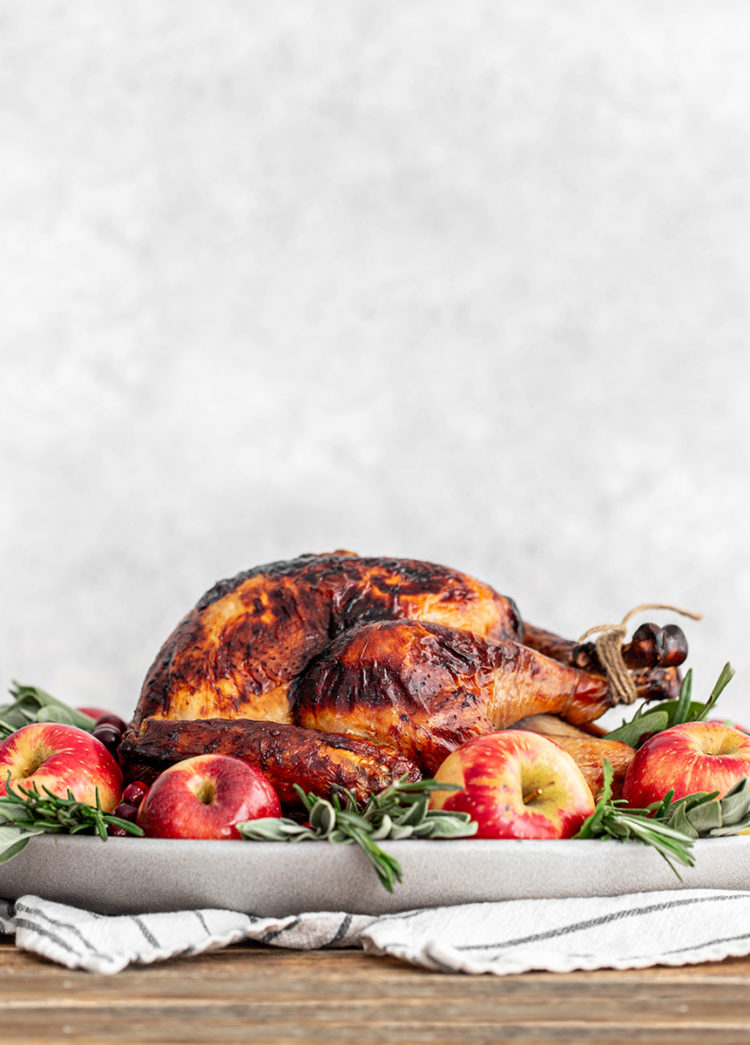
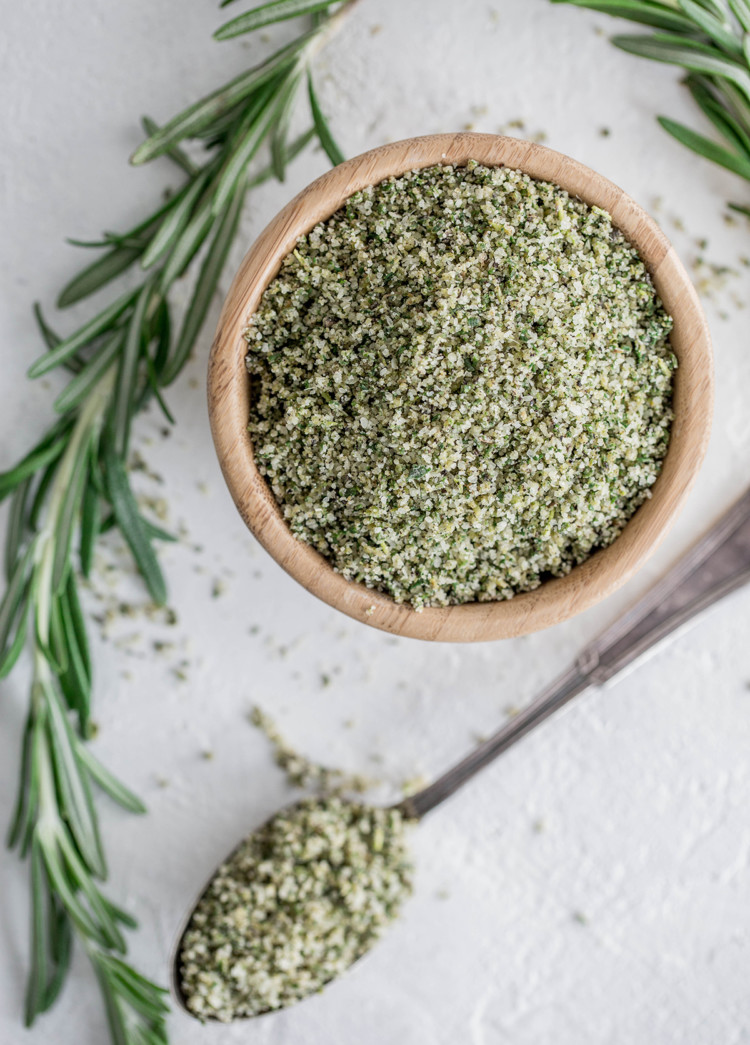
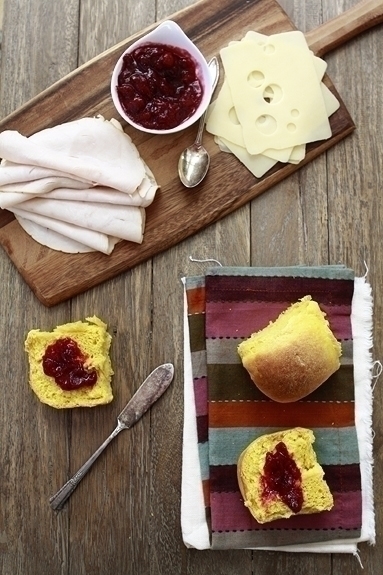
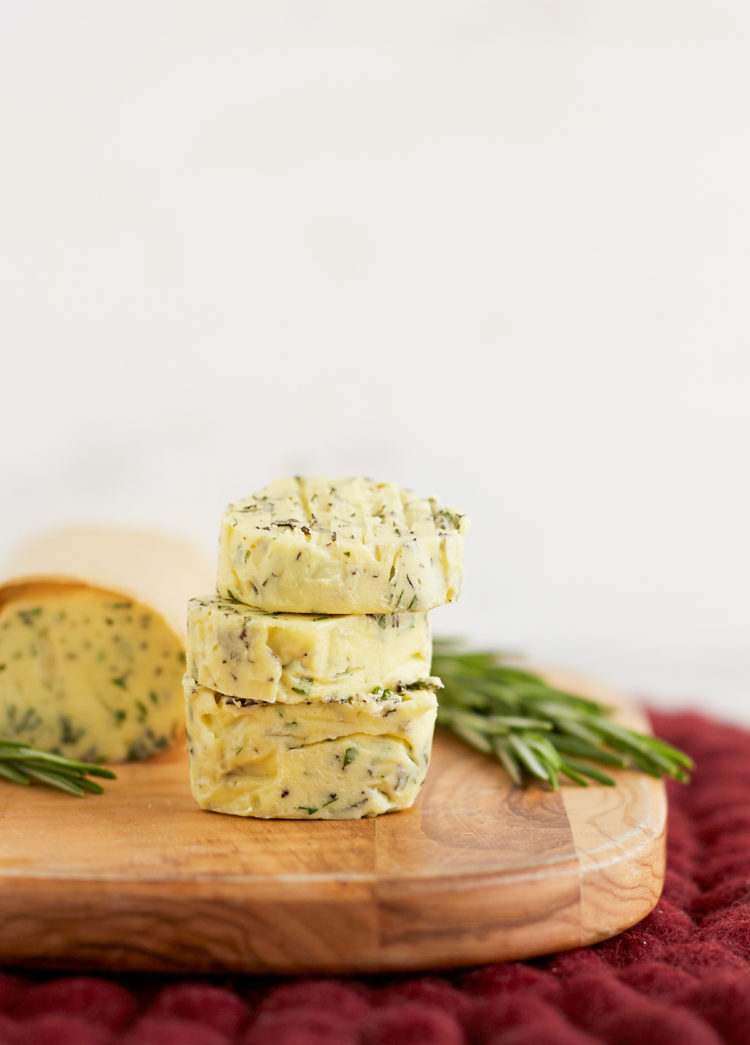
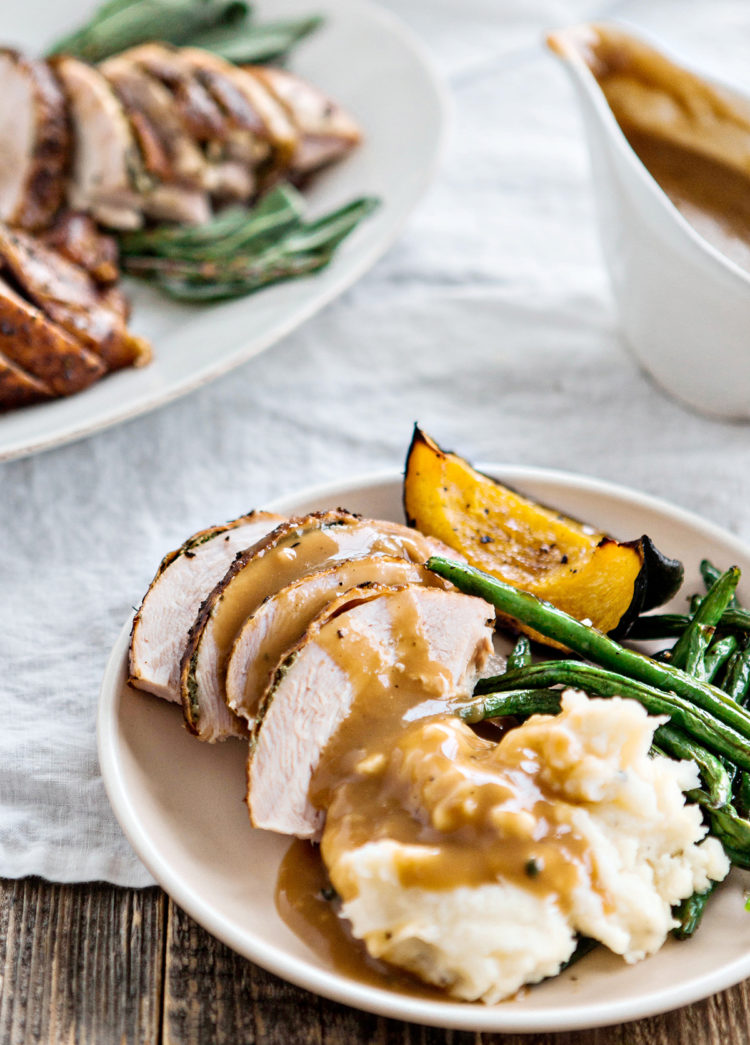

Leave a Comment